I’ve always wanted to go to the Sundance Film Festival.
Sure, as a native Texan, I’m about as well-equipped for the cold weather of Utah as a garter snake. But everything about this festival has long spoken to me. At first, as a kid, it was just knowing that this was the place where buzzy films debuted. This is where Little Miss Sunshine and Hamlet 2 got their start. Seeing that little “Sundance Film Festival” logo on certain movie posters let me know that this was something prestigious.
As I got older and changed, so too did the reasons why I admired the Sundance Film Festival. Being able to fully appreciate its rich history, I now saw it as a destination where diverse artists from all over the world had a chance to unite, share their works, and be seen as filmmakers. In the American film industry, there are more hurdles to getting films made than actual filmmakers. Within Sundance, those hurdles, at least momentarily, get minimized. Recognizing that, my desire to go to the Sundance Film Festival has only increased in recent years. Now, here it is, my ambitions becoming flesh.
Admittedly, doing a virtual version of this festival isn’t a 1:1 with the traditional experience of actually sitting in a theater in Salt Lake City and enjoying new indie films with people from all walks of life. Audiences consisting of critics, general moviegoers, and big-name celebrities are whittled down to just yourself and your pet. (In my case, a Black pug.) However, there’s no getting around the simple fact that there was no way to replicate tradition under current circumstances.
Plus, for a newbie like me, it does provide a kind-of transition period.
The actual Sundance Film Festival sounds like a blast, but like any film festival, it also sounds like it has its stressful qualities in person. Racing from shuttle to shuttle, trying to get to screenings on time, struggling to catch up with everything — it can be frantic. The streamlined version of the Sundance Film Festival, where it all takes place on your TV, loses the glitz and glamor, but it is much easier to tackle. It’s like the equivalent of training wheels for a Sundance newbie like me. Here’s to hoping this health crisis subsides enough by next year that I can do the Sundance two-wheeled bike!
It’s easy to adjust to this new take on the Sundance Film Festival since the virtual version, at least thus far, works like a charm in terms of technology.
Reserving seats for screenings in advance proved so easy that I initially worried that I had done something wrong. Surely, it couldn’t be that simple. The films themselves have so far aired without a hitch. No buffering issues, picture quality looks good, easy to navigate to your selections. They’ve even made sure there’s an Amazon Fire app for your TV; which makes watching these movies on an appropriately-large screen all the easier.
All of this is an elaborate way of saying that assimilating to the Sundance routine has proven smooth; thanks to the way this virtual film festival has been executed. I’ll be curious to see if there are any major hiccups in the technology in the days ahead as more film screenings proceed.
Speaking of screenings, let’s look at some films from the first two days of the festival.
This article contains spoilers.
CODA
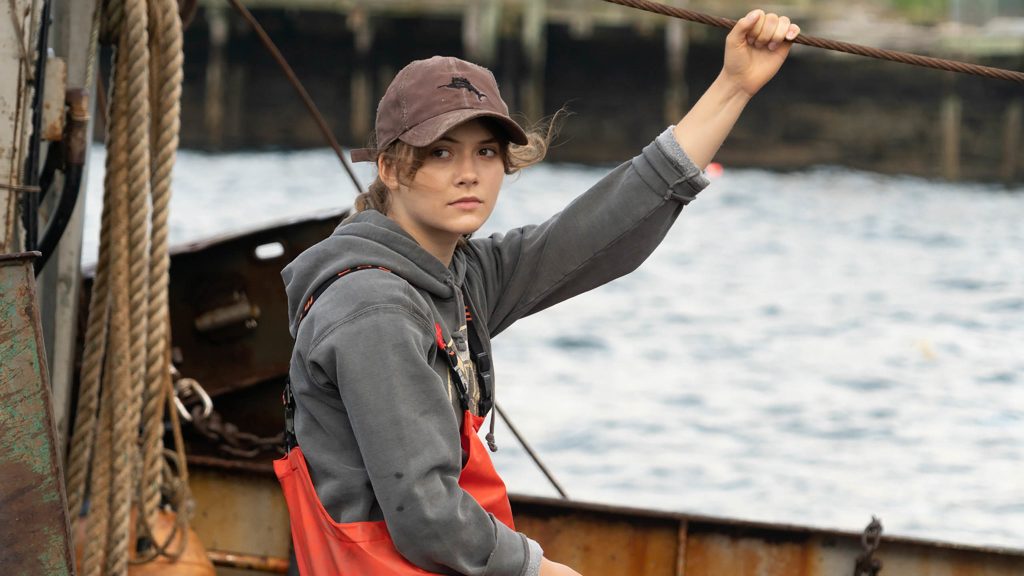
Directed by Sian Heder, CODA chronicles Ruby Rossi (Emilia Jones), a hearing high school senior in a deaf family; consisting of parents Frank (Troy Kotsur) and Jackie (Marlee Maitlin), and her older brother Leo (Daniel Durant). The family is struggling to keep their fishing business up and running in the face of economic turmoil while Ruby’s obligations to her family are clashing with her choir pursuits.
CODA is a movie that gets better the more specific it gets. A third-act conversation where Jackie explains to Ruby her response upon first discovering that her daughter was hearing, for instance, is utterly riveting.
Heder’s screenplay lends the conversation such detailed vulnerability while both Maitlin and Jones ace the subtle nuances of this interaction.
Another scene of Leo trying and struggling to socially interact with hearing fishermen at a bar is a similarly unique sequence that captures one’s attention by doing something distinctly different.
Unfortunately, much of the movie gets bogged down by all-too-familiar details. Ruby and her crush Miles (Ferdia Walsh-Peelo) have a romantic rendezvous jumping off a high cliff and into a lake; Ruby’s sex-obsessed best friend could have been airlifted in from any other high school movie; and the same can be said for an unnamed bully that awkwardly vanishes midway through the film.
CODA’s derivative qualities are more forgettable than outright bad. Plus, they’re balanced out by the dependably strong cast, which turns in all-around memorable work. Particularly enjoyable are Kotsur and Maitlin as Ruby’s oversized but endearing parents. No matter how formulaic it is, there’s no denying that the big emotional climax of CODA proves effective in tugging at heartstrings. It’s a stirring scene that made me wish more of CODA was this consistently creative.
CENSOR
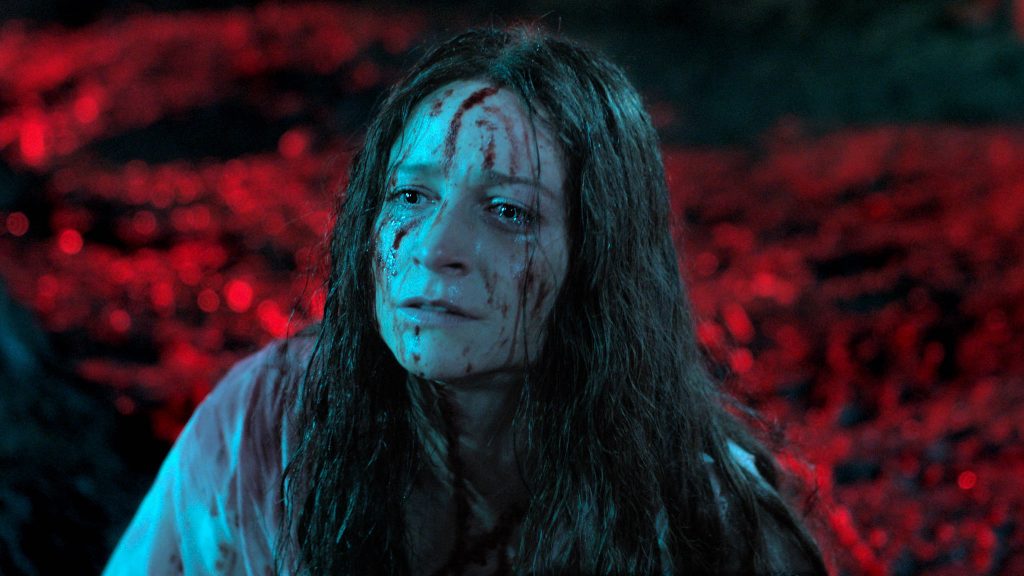
The “video nasty” phenomenon of the 1980s was based in the United Kingdom. It referred to video cassette tapes of extremely graphic and violent movies, like Herschel Gordon Lewis’s directorial efforts.
Public outcry led to censors stepping in to trim as much obscene content from these movies as possible. This is where Enid Baines (Niamh Algar) comes in. She and the other censors at her office work to make sure nothing repulsive is released to the public. But Baines has got more on her plate than just disgusting movies. She’s also still reeling from the childhood disappearance of her sister.
Enid is always on the lookout for her sister; to the point of mistaking strangers on the street for her sister all grown-up. However, she thinks she’s found something genuine in a new horror movie that bears more than a passing resemblance to the circumstances surrounding her sister’s disappearance. Now, Enid is on the hunt for an actress named Alice Lee that she believes could be her sister.
It’s a search that blurs the lines between reality and the horror movies Enid watches for a living.
Director Prano Bailey-Bond (who also wrote the script with Anthony Fletcher) is doing a lot with Censor. It’s primarily a drama exploring how all-consuming grief can be. But it’s also a homage to 1980s horror and exploitation cinema. The latter quality proves especially interesting since Bailey-Bond isn’t doing a bunch of Ready Player One-style Easter eggs related to this era of spooky filmmaking and calling it a day. She’s simultaneously here to defend and deconstruct a genre she loves very much.
Censor’s script goes through great pains to show that, contrary to what the public believed in the 1980s, graphic horror movies aren’t the root of real-world violence. However, Bailey-Bond does take to task the misogynistic qualities of these productions, such as rampant rape and torture of women. The people behind these movies have such dehumanizing approaches to women that they can’t help but feel like movie monsters themselves. In Censor, films don’t cause violence. People with power, like predatory producers or Margaret Thatcher (briefly glimpsed on a TV), are the actual source of actual despair.
It’s a complex approach to this genre that’s matched by the similarly thoughtful execution of how wrapped up Enid has become in her sister’s decades-long disappearance.
Sometimes, the sheer amount of themes Censor is trying to explore at once does overwhelm. These moments see such an influx of subtext that there isn’t much actual text for the viewer to latch onto. Plus, people familiar with terminology related to young women in the adult-skewing entertainment industry will likely pick up on one of the central twists in Censor early. For the most part, though, the proceedings prove as contemplative as they are brain-meltingly eerie. Niamh Alger’s gusto lead performance is captivating. Watching her unravel as Censor goes on is as memorably unnerving a sight as anything in a classic “video nasty”.
ONE FOR THE ROAD
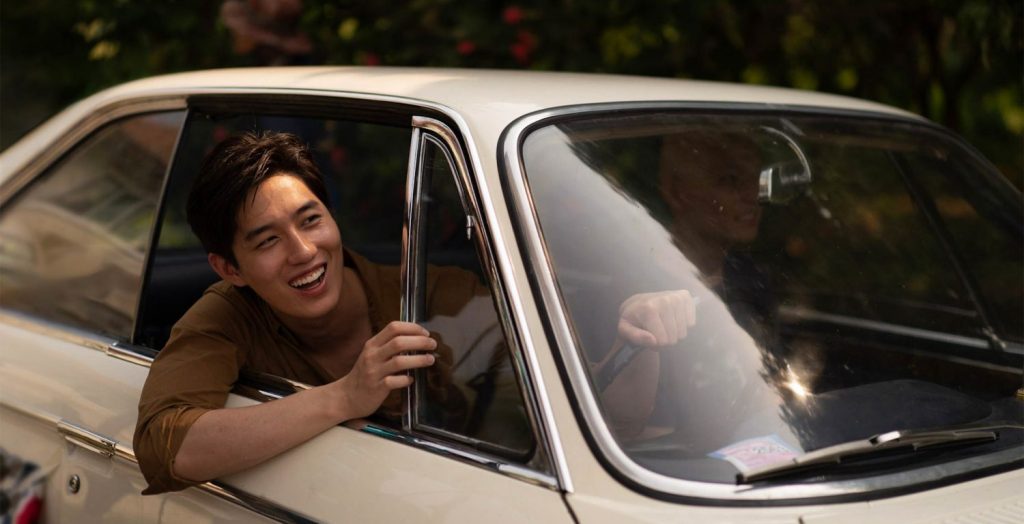
This drama from director Nattawut Poonpiriya concerns two friends, Boss (Thanapob Leeratanakajorn) and Aood (Natara Nopparatayapon). They reunite when Aood reveals he’s dying of leukemia. Aood’s dying wish is to visit a series of ex-lovers all across Thailand; a task that Boss agrees to help with. While engaging in this pursuit, tidy closure turns out to be harder to pursue than expected. It also turns out Boss is recovering from his own failed love, which has haunted him for years.
In many respects, One for the Road feels tailor-made for sensibilities.
Needle drops of Elton John’s “Tiny Dancer” and Cat Stevens’ “Father & Son”. I can’t hear those tunes without getting teary-eyed. A story with a melancholy and reflective ambiance is also something I find irresistible. Juxtaposing lively camerawork seemingly straight out of a Matthew Vaughn movie with such an inanimate drama is the sort of bold swing I can’t help but admire. Oh, and there’s also a one-scene cameo from a pug! That’s always great!
One for the Road proves incredibly engaging for its first-half as Aood has messy encounters with the women of his past. They turn out to be fully-formed people rather than sources of easy solace. The script does take a dip in quality when Boss reveals his past relationship with a bartender named Prim (Violette Wautier). It makes sense conceptually why this background is needed; but in execution, it feels like the movie we’re watching comes to a screeching halt for a wholly separate film. An ending that caps things off on too tidy of a note also can’t help but underwhelm.
Still, the parts of One for the Road that work outright shine, particularly Nattawut Poonpiriya’s memorable direction. He makes great use of vibrant colors to reflect the interior worlds of the characters as well as simply convey an intoxicating romantic aesthetic.
HOW IT ENDS
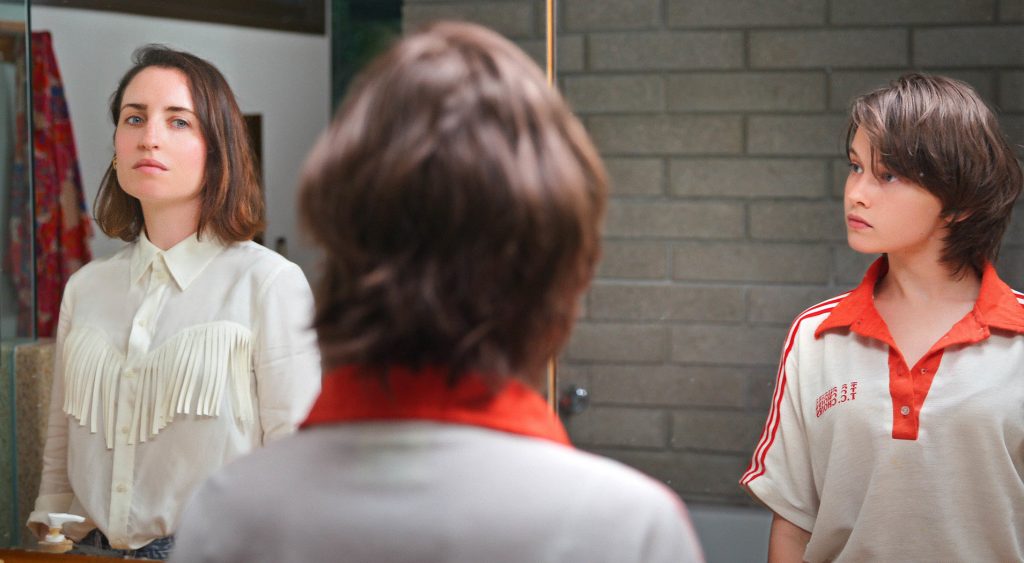
It’s the end of the world as everybody knows it and Liz (Zoe Lister-Jones) does not feel fine. On the last day before an asteroid wipes out Earth, Liz and her younger self (Cailee Spaeny) venture into Los Angeles to resolve an assortment of personal business. These include confronting a toxic boyfriend, making amends with a former boyfriend, and having personal discussions with each of her parents. Oh, and scoring some weed, that’s also important.
Though it runs just 82 minutes, How It Ends is a comedy that feels like it runs a lot longer simply because the gags keep falling flat. Much of the movie is dedicated to Liz and her younger self encountering a series of celebrity cameos; many of which fail to tickle or stimulate your brain. Some editing was needed for some of these encounters, which tend to overstay their welcome. Without much successful comedy to engage the viewer, How It Ends quickly becomes a slog.
The best parts of this directorial effort from Zoe Lister-Jones and Daryl Wein are the two lead performances.
Lister-Jones and Spaeny convincingly convey older and younger versions of each other right down to their tiniest mannerisms. Unfortunately, a pair of detailed performances can only carry a movie so far. They certainly can’t overcome flaws like awkward staging that sees characters conversing with each between great distances. It’s a constant reminder that this was shot during the middle of the COVID-19 pandemic; and takes you right out of a movie that’s already hard to get absorbed in.
ON THE COUNT OF THREE
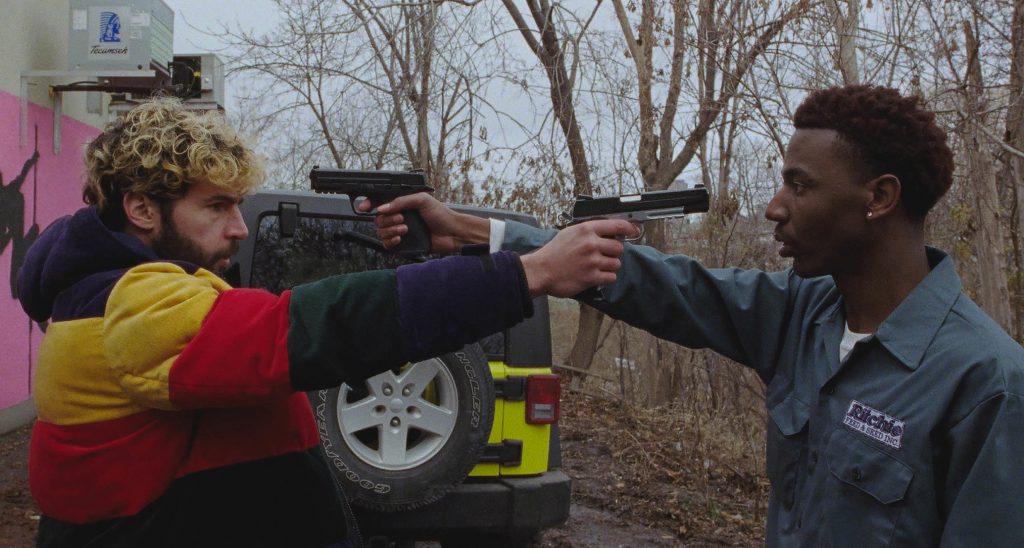
Val (Jerrod Carmichael) and Kevin (Christopher Abbott) are long-time best friends who have a lot of things in common. On one seemingly normal day, one of those shared traits is a yearning to commit suicide. Val then gets an idea that they should each use a handgun to kill the other. Kevin convinces Val to postpone the plan until the end of the day. Now the duo is spending the day confronting demons they would normally just ignore; including Val’s turmoil with his girlfriend and Kevin’s trauma with a local pediatrician.
On the Count of Three has a premise that sounds, on paper, like something that would cross over into edgelord territory. While the final film is provocative and button-pushing, it’s also far more than just empty shock value. On the Count of Three plunges viewers into a movie that’s full of bleak nihilism. Val especially carries an outlook on life as grim as the strip club parking lot he and Kevin initially plan to kill each other in.
The secret ingredient to what makes On the Count of Three work is the central friendship between Val and Kevin.
In the dynamic between these two characters, there isn’t a shred of cynicism. Val and Kevin have such authentic affection for one another. In a world full of people who minimize or outright ignore their pain, the small words of encouragement or validity they share feels earth-shattering. Carmichael and Abbott share a realistic bond that sells not only this level of affection, but the idea that these are two guys that have had each other’s backs for decades. This captivatingly brutal friendship lends an anchor to On the Count of Three and ensures it’s kept firmly in the territory of thought-provoking darkness.
In addition to starring in the project, Carmichael also makes his feature-length directorial debut with On the Count of Three. He proves quite skilled at handling the movie’s complex tone and executing some truly unnerving suspense sequences. He also gets unexpected dramatic turns from supporting comedic actors Tiffany Haddish and Henry Winkler. The ingenuity in Carmichael’s filmmaking also extends to the needle drops, with songs from Travis Tritt and Papa Roach littering the soundtrack. You’ve gotta admire eclectic music choices like that, especially when they appear in a movie as boldly rendered as On the Count of Three.
Douglas Laman is a freelance writer providing Sundance Film Festival coverage for Offcultured.
Header: One for the Road (Courtesy of Sundance Institute)
